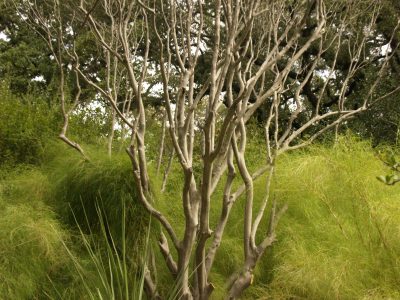Why did my rock rose seed out with white flowers, rather than pink?
Great question, Laura! She wants to know why her rock rose (Pavonia lasiopetala), which has been in her garden for years and has pink flowers, suddenly seeded out with white flowers.
This plant generously reseeds for her, so last spring, she moved three of the seedlings to brighten up a semi-shaded area. One of them bloomed pure white!
What could have caused this and how can she propagate it to generate more of these gems? Well, Laura, the answer is in genetics. White flowers are actually recessive in rock rose, with pink being the most common color. But occasionally, the genes cross, thorough pollination, in such a way that both parents contribute the recessive white-flowering gene, instead of the pink-flowering one.
That recessive white flowering gene may or may not appear again anytime soon in your seedlings, but the plant that produces white flowers now should always produce white flowers.
You can isolate the white-flowering plant, perhaps in a container in a greenhouse, and pollinate it with its own flowers, which would give you a better, although not 100%, chance of producing more white-flowering seedlings. The key would be complete isolation, since you wouldn’t be able to protect the plant from stray pollen from the “normal” rock rose any other way. And even though there would be no way of knowing if the seedlings would ultimately have white or pink flowers until the flowers were actually visible, this sounds like a fun experiment, and worth the effort, to get more of these plants.
You can also propagate it from cuttings, which will be easier if you can’t isolate the plant. According to Jill Nokes, author of How To Grow Native Plants of Texas and the Southwest, take softwood tip cuttings in summer through fall. They should be 3-6 inches long and cut just below a node. She recommends taking cuttings with a thicker diameter.

 Patrick Kirwin
Patrick Kirwin